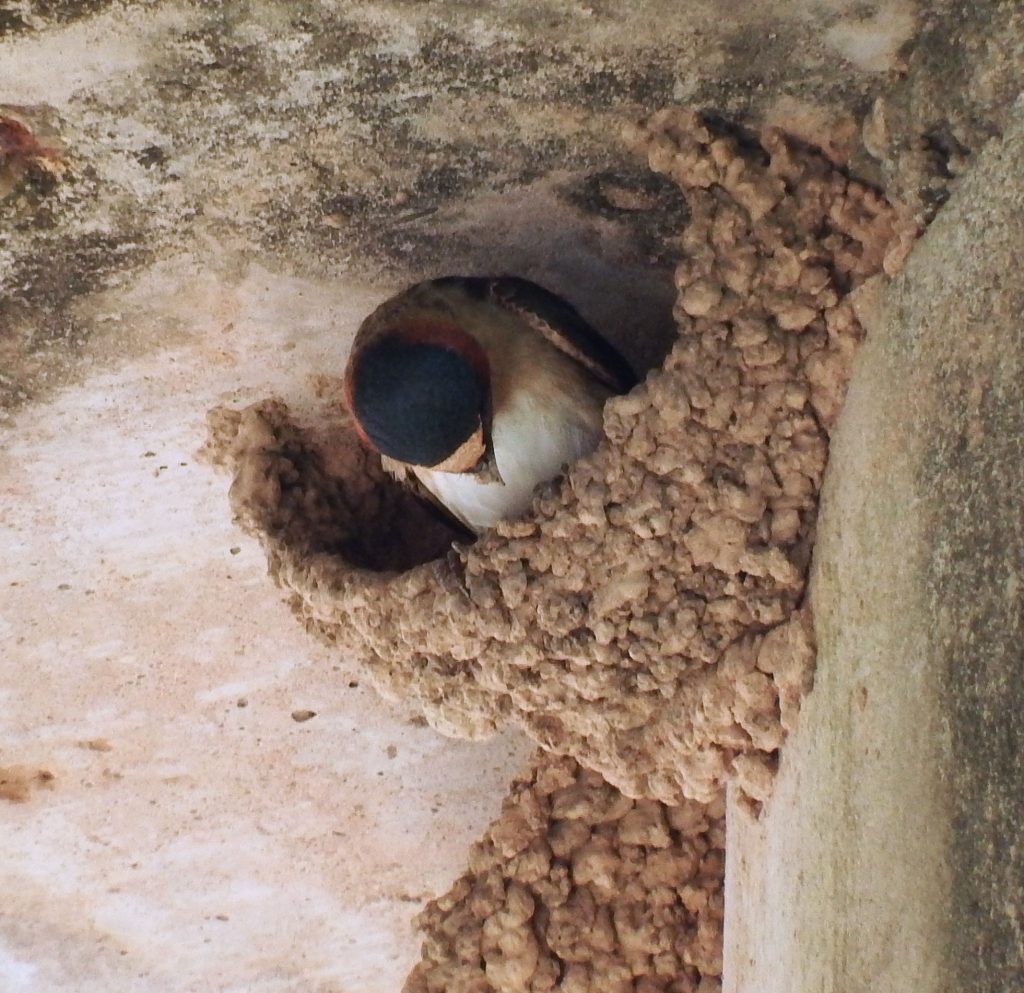More cliff swallow mysteries

We tend to think of animals as interesting stimulus-response machines. When faced with X set of circumstances, the animal will be triggered to do Y. The bee sees a flower, which triggers the urge to drink nectar which causes the bee to bump into pollen organs. That triggers the bee to groom and pack that pollen into sacs. Everything happens without the bee “deciding” to do those things.
We can get a glimpse of what life would be like if we were a simple stimulus-response machine because those triggers work on us as well. You may have no thought of eating ice cream, but see a nice bowl of ice cream and suddenly, you think ice cream might be a good thing to have right now. You also think that if you give in to that impulse, you will never again wear those jeans you love so dearly. The desire to eat the ice cream was triggered by seeing the ice cream. If you were an animal without the luxury (or curse) of an inner voice reminding you about the jeans, you would just eat the ice cream.
We imagine that inner voice, which we often call consciousness, to be the big dividing line between the animal kingdom and humans. But the construct breaks down in all sorts of ways and in both directions.
For example, our cliff swallows. A year ago, they returned from South America only to find their colony of many years washed away by Harvey. With great energy and enthusiasm, they rebuilt their colony under the bat bridge and raised their young. Stimulus-response. You are a colonial bird, expecting to find a long-established colony. It’s gone, that triggers the build-a-nest response and hey presto, the colony is rebuilt.
Last year, they started rebuilding at the end of March, so, this March, I began checking the colony for signs of life. The end of March passed without any cliff swallows. I got worried and began hunting for them. That’s how I came to misidentify some barn swallows and got a blog post out of it!
On April 15, I was relieved to see cliff swallows in last year’s colony. There were 14 completed nests of which 10 were occupied when I looked.
So given this, why have a second batch of cliff swallows started a new colony under the Studemont bridge over the Bayou?
The colony they have decided not to join is still being used by 20+ cliff swallows and there is plenty of room for expansion. That colony has been there for as long as I can remember and it used to be bigger. There has never been a colony under the Studemont bridge in my memory and I am old.
Did this large group move to new quarters because of political differences? Did they have a leader who pushed them to follow to a new home? Maybe they are just confused. Twice I saw strange and seemingly pointless flights. The video below is in slow motion. Without it, you can’t really see that all this activity is in the service of absolutely nothing.
If you think I’m going to provide an answer to any of these questions, you will be disappointed. I am left only with questions and a reinforced desire to better understand how animal minds work. Also with yet another piece of evidence that the whole stimulus-response model for animal behavior is probably too simple.
In this second video (normal speed), you can see the half-built nests at Studemont. While the males usually begin the nests, building is a couples project. The nests are valuable real estate, so usually, one member of a pair will remain in the half-built nest until the mate returns with mud.
If you have a chance to stop under the Studemont bridge, take a moment and admire the frantic effort and industriousness of our second colony of cliff swallows. And, for the charming British couple who puzzled with me over a duck perched above the cliff swallows, it was probably a juvenile muscovy and it was gone the second time I visited.
Hawk update
I still have no evidence that the red-shouldered hawk eggs have hatched (it takes a month), but I was present for the changing of the guard and have video, so that’s cool.

